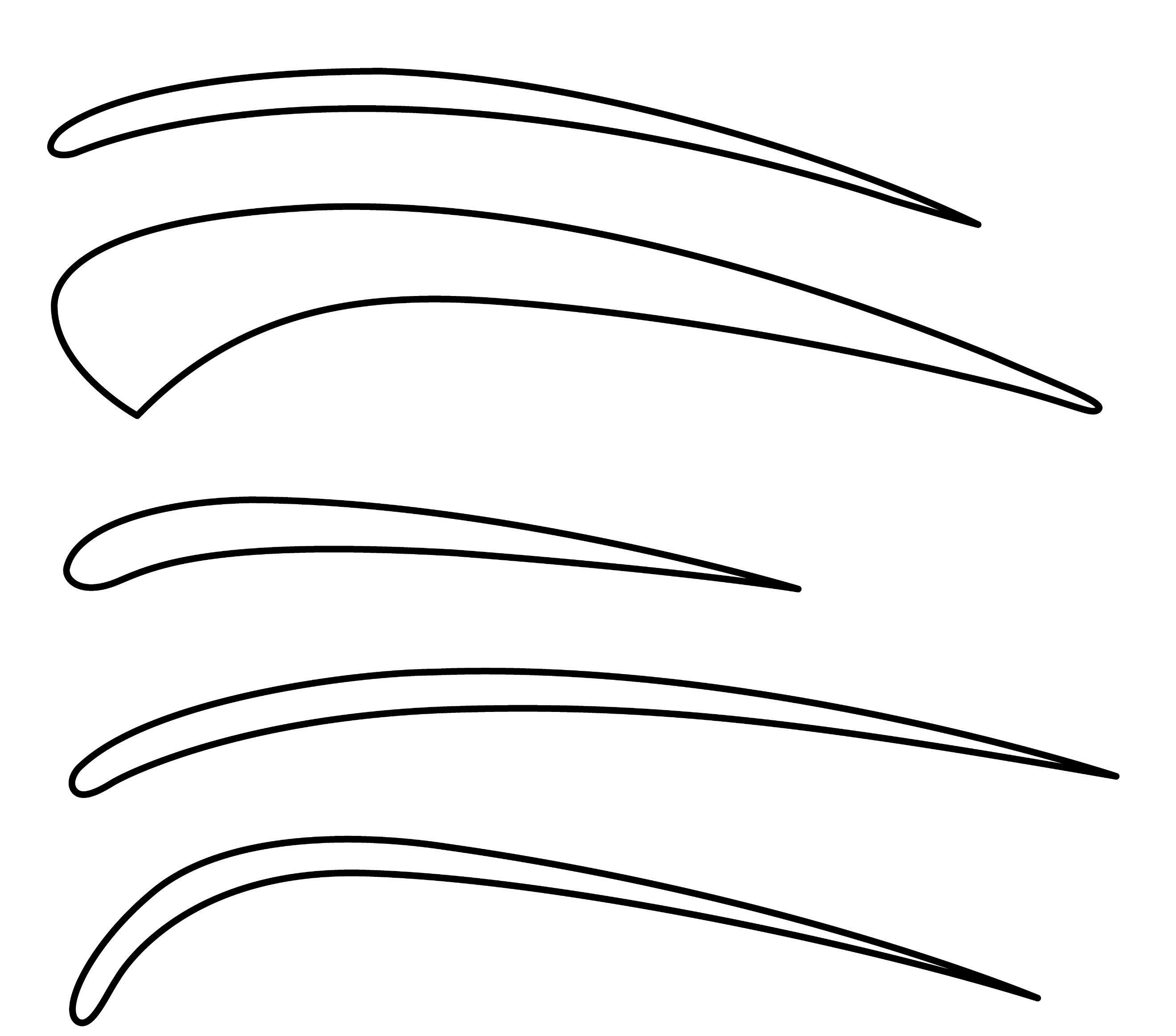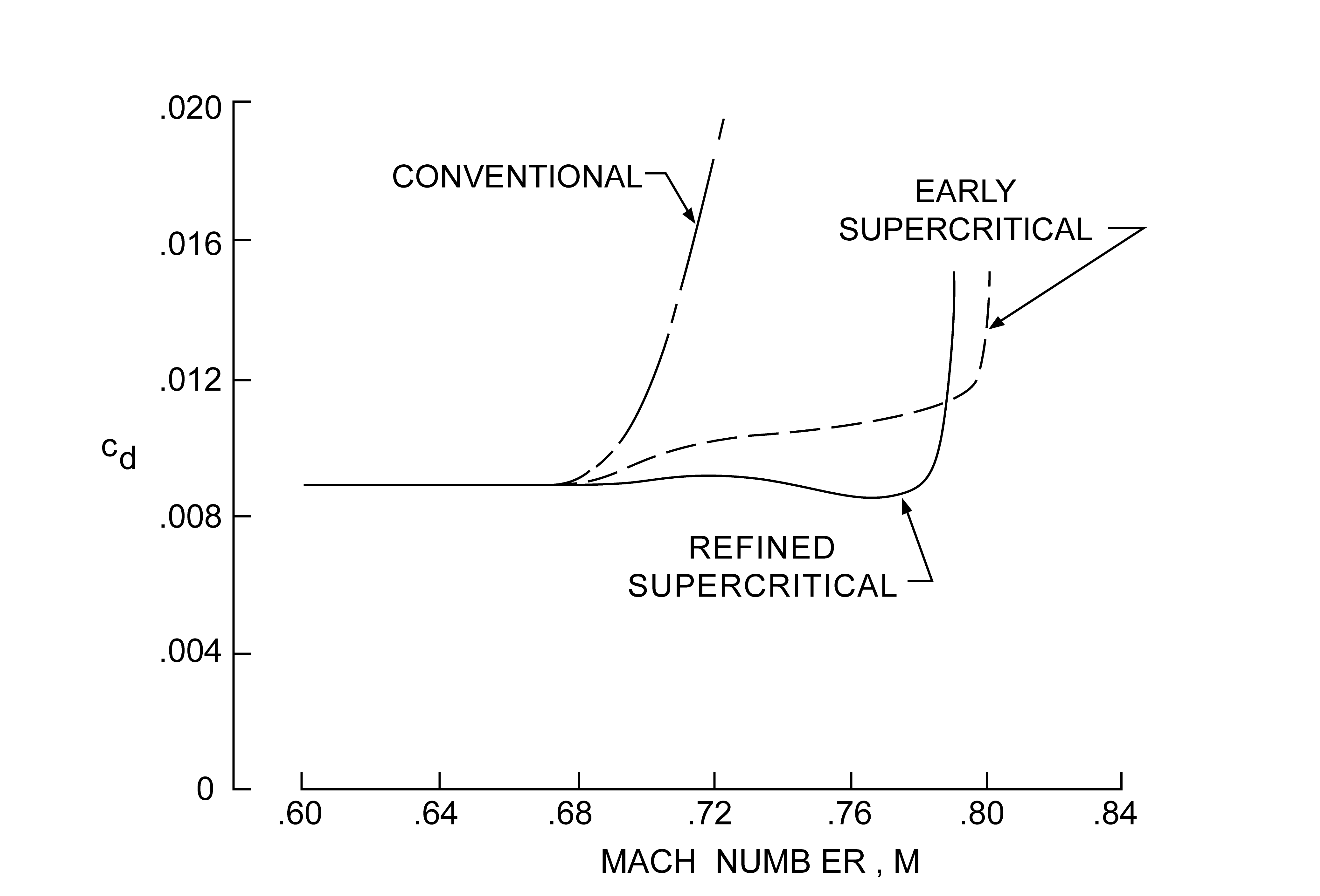1. Introduction
The aircraft is a shining pearl in the history of human. The sky is both mysterious and attractive to humans, people always long to fly freely in the air like birds since time immemorial. In early human civilization, there are many instances of attempting to soar in the sky. Although they ultimately fail, it highlights the human desire to soar in the sky. After the invention of aircraft, the exploration of aircraft lasts more than 100 years. Over the past hundred years, the development of aircraft has been very rapid, and research on aircrafts has become increasingly in-depth and comprehensive. In order to improve the performance of the aircraft, scientists propose many famous aircraft design theories, especially in the field of aerodynamics, constantly update research methods, combine theory with practice, and continuously improve the structural design of aircraft to meet the needs of aircraft performance.
In order to improve the understanding of aircraft and prepare for further development of aircraft, this article divides the development history of aircraft into three important stages based on the overall breakthrough of aircraft and discusses the process of aircraft from the birth of imitating bird wings at the beginning to the continuous improvement combined with aerodynamics. Aircraft design theory is a key factor in the development of aircraft. The emergence and application of aerodynamics have deepened people's understanding of the mysteries of bird flight and become the basis for aircraft design. The successive proposals of attached flow pattern, detached flow pattern, and shock wave flow pattern help aircraft obtain more efficient energy to improve lift. Meanwhile, the introduction of swept wings and flaps gives the aircraft greater lift and resistance to drag and the invention of jet engines brings more power to aircraft. In the research process of aircraft, the airfoil is one of the important factors affecting aerodynamic performance. From the design concept of the airfoil with large camber and small thickness to the airfoil with small camber and large thickness and later research on supercritical airfoils, every breakthrough in airfoil design concept has greatly improved the performance of aircraft. Therefore, studying the development of aircraft design theory is meaningful.
2. Period after invention of aircraft
2.1. Invention process of first motorplane
In the early days of airplanes, there are few mature design theories. People rely more on trials when designing aircraft. Inspired by Otto Lilienthal, the Wright brothers embark on the path of exploring the mysteries of aircraft. They study a lot of theoretical knowledge about aerodynamics and conduct systematic research related to aviation [1]. As the airfoil is the main part of aircraft design, and the early designers pay a lot of attention to it. In order to get an applicable airfoil, the Wright brothers utilize kites to conduct experimental tests. They get a lot of data like drag and lift forces from the kite experiment, and Wilbur Wright find that the data recorded by Otto Lilienthal may have some error [2]. In order to obtain more accurate and detailed data, the Wright brothers build a wind tunnel and two force balance systems. Then they test more than 200 species of bird-like wings and promote the birth of the first motorplane “Flyer 1”.
2.2. Airfoil characteristics of early aircraft
In the early days of airplanes, most designers design airfoils on the base of bird wings. The characteristics of these airfoils are large curvature and small thinness. Figure 1 is the typical airfoils tested by the Wright Brothers and Figure 2 is the airfoils invented by L. Bleriot in 1909. These early airfoils all have larger camber and smaller thickness [3]. An airfoil designed in this way, although capable of significant lift, also has a high level of drag [4]. Thus, the airfoil with a large camber and small thickness cannot achieve a good lift-to-drag ratio. The early research method that relies solely on trials cannot meet the needs of more suitable airfoils. In order to overcome the obstacle of design, many theories related to the airfoils are established one after another. The Kutta-Kutsky hypothesis holds a pivotal position among these theories without doubt. Based on this hypothesis, designers can get lift more in line with the actual flight. A few years after the emergence of the Kutta-Kutsky hypothesis, N. Joukowsky proposes the famous airfoil: Joukowsky airfoil. The Joukowsky airfoil has smaller relative camber and larger relative thicknesses than the earlier airfoils (as shown in Figure 3) [3]. After that, more and more countries pay great attention to the research of advanced airfoil, and a variety of famous airfoil series are produced.

Figure 1.Typical airfoils tested by the Wright Brothers [3].

Figure 2. Airfoils invented by L. Bleriot in 1909 [3].

Figure 3. Airfoil shapes invented by Joukowsky in 1912 [3].
3. period of in-depth exploration
3.1. Proposal of circulation theory
After World War I, the research achievements in aerodynamics promote the development of aircraft. The main object of researches is the aircraft’s lift and drag [5]. Among these achievements, the circulation theory developed by F.W Lanchester, N. Joukowsky and Kutta provides great help in aircraft’s lift. The circulation theory not only perfectly explains the formation of lift, but also greatly promotes the development of aviation technology. According to this theory, the vortex that surrounds the airfoil is the essential condition for getting lift. As the aircraft moves forward, the vortex continues to dissipate, but at the same time, a new vortex is constantly generated around the wing section to give the aircraft a sustained lift [6]. This airfoil flow pattern is called the attached flow pattern because the vortex always attaches to the aircraft. The circulation theory and the attached flow pattern play an important role in the development of aerodynamics because they are the only methods for early aircraft designers.
3.2. Proposal of flap
Besides the theoretical innovations, the flap proposed by Kelly is also a revolutionary breakthrough and invention. The flap can increase the lift by changing the airfoils’ curvature and area. There are four main types of flaps: plain flaps, split flaps, slotted flaps, and fowler flaps. The latter two types of flaps, although structurally complex, have better performance in increasing lift, increasing the lift coefficient by 85%~95% [4]. The classification of flaps can also be divided into leading edge flaps and trailing edge flaps based on the installation location. A reasonable combination of these flaps can improve the lift performance in various scenarios.
3.3. Characteristics of airfoil
At this period, the airfoil is still the hot research subject. Different from the earlier research methods based on experience, fully integrating aerodynamic theory with wind tunnel experiments becomes the mainstream method of aircraft research. In order to conduct more in-depth research on airfoils, the NACA is established. The famous NACA series of airfoils has been successfully released, laying the foundation for America to become an aviation powerhouse in the pneumatic field [3]. Undoubtedly, the emergence of NACA series airfoils greatly improves performance and promotes the renewal and replacement of aircraft.
3.4. Application of aircraft on the battlefield
Due to the worldwide attention and excellent performance, aircrafts are used on the battlefield. Before the 1950s, aircrafts are powered by piston engines and fly at subsonic speed. In World War I, aircrafts mainly conduct reconnaissance tasks with their superb speed and unique aerial advantages. With the development of aviation technology, in World War II aircrafts become an important combat tool equipped with all kinds of lethal weapons. The wars sharply promote the development of the airplane and take the piston aircraft to the pinnacle of performance [5].
4. period of breaking sound barrier
4.1. Main obstacle-- shock waves
When the speed of aircraft increases rapidly to the critical velocity of sound, the research of how to break through the velocity of sound becomes an important issue in this era. The main obstacle to achieving supersonic speeds is the shock wave generated in a supersonic state. When the speed of aircraft is faster than the sound speed, the shock waves are like a highly dense wall blocking the front of the aircraft [7]. The appearance of shock waves will sharply increase the drag and power consumption of aircraft, while affecting the operability and stability of the aircraft [6]. Therefore, the improvement of the structure and the power system becomes the key to solving the problem.
4.2. Improvement of structure
In 1935, a German researcher named Adolf Buseman proposes the idea of a swept back wing. This path-breaking idea quickly gains the attention of the military and a large number of wind tunnel experiments are conducted. According to the experimental data from the wind tunnel, transforming the flat wings into backward-sloping wings can reduce the magnitude of shock resistance. The swept-back wings also increase the critical speed of the aircraft and reduce flight drag when they are flying at high speed. The proposal of the swept-back wing memorably accelerates the development of the transonic aircraft and is regarded as one of the most important aerodynamic ideas in the 1930s to 1940s.
4.3. Improvement of power system
During the same period, British aviation engineer Frank Whittle and German mechanical engineer Hans Joachim Pabst von Ohain independently invent the jet engine to solve the problems caused by piston engines. Firstly, the inherent defects of piston engines are not conducive to the rapid development of aircraft, such as large weight, large volume, complex structure, and low power. Moreover, the power conversion devices of piston engines are propellers and the efficiency of the propeller can sharply decrease at high speeds [5]. In 1939, the plane equipped with a jet engine designed by Ohain and Heinkel successfully takes off at Rostock-Marienehe Airport and becomes the first jet aircraft in the world.
4.4. Discovery of Area Ratio
At subsonic speeds, when the shape of the wing and fuselage is very streamlined, with little curvature and no separation, the pressure difference drag caused by the thickness of the wing and fuselage is very small and often negligible. But at supersonic speeds, the mutual interference between shock waves can generate significant drag, and the drag is mainly related to the thickness ratio and slenderness ratio of the wing and fuselage [8]. According to this, American researcher Whitcomb proposes the transonic area rate in 1952. This discovery plays an important role in successfully breaking through sound barriers for aircraft. Besides, the supersonic area ratio is proposed by Jones in 1953 and then becomes widely used on many high subsonic and supersonic combat aircraft.
4.5. Discovery of new flow pattern
The adoption of swept wings, jet engines, and area ratio brings the aircraft into the supersonic. In the 1950s, although aircrafts can reach three times the speed of sound, most aircrafts still generate lift from the attached vortex. In 1955, the conventional design concept of aircrafts that utilizes attached vortex and inhibiting free vortex begins to break out. The British Aviation Research Institute observes and studies the free vortex separation under large swept-back conditions and they call the generated conical airflow a detached vortex [6]. As the detached vortex can create a low-pressure area on the upper surface of the main wing surface, the detached vortex can be used to generate lift for the aircraft. Utilizing the detached vortex lift is an important ideological revolution in aircraft aerodynamic design.
4.6. Research on Supercritical Airfoil
The supercritical airfoil is a special type of airfoil that can delay the phenomenon of sharp increase in drag near the speed of sound by increasing the critical Mach number. In the 1960s and 1970s, NASA is dedicated to airfoil research with good transonic behavior and acceptable low-speed characteristics [9]. The concept of supercritical airfoil is proposed by Richard Whitcomb in 1967. The supercritical airfoil has the characteristic of a large leading-edge radius with reduced curvature over the middle region of the upper surface and substantial aft camber [9]. According to Richard Whitcomb's research report, supercritical airfoils have larger drag-divergence properties than conventional airfoils(as shown in Figure 4) [10]. The proposal of supercritical airfoils is a major breakthrough in aerodynamics and it greatly propels the development of supersonic aircraft.
4.7. A new understanding of shock wave
The shock wave is a type of strong compression wave in supersonic airflow, characterized by high pressure, high density, high temperature, and low speed. The shock wave brings tremendous drag to the transonic flight of aircraft and intensifies the energy consumption of the propulsion system. At the same time, it also weakens the structural strength and worsens stability and maneuverability. So people usually consider it to be harmful without any benefits. However, some aerodynamicists begin to investigate the possibility of using shock waves to generate lift and lead to the concept of wave-bearing aircraft in 1960s. Nowadays, more and more aircrafts use shock waves to generate lift since the proposal of shock flow patterns. Compared to conventional aircraft, waveriders have many advantages such as high lift, high lift-drag ratio, and simple appearance. Although there are many difficulties in the research of waveriders, their prospects are very bright.

Figure 4. Drag-rise characteristics for various airfoils [10].
5. Conclusion
This article focuses on the difficulties and solutions during the three important stages of aircraft development, elaborating on the century-long history of aircraft development. It can be found that the important issues in the development of aircraft are mainly the lift and drag. Scientists make great efforts to achieve a better lift-to-drag ratio. In terms of aircraft flow patterns, the aircrafts are designed on the base of attached flow pattern, detached flow pattern utilizing free vortex energy, and shock wave flow pattern utilizing shock waves to generate lift. The three leaps in the understanding of flow patterns are major changes in aircraft development and design ideas. In addition, the application of flaps, swept wings, and other structures plays a crucial role in improving an aircraft’s lift and overcoming drag. At the same time, the research on airfoils from the imitation of bird wings to the proposal of supercritical airfoil greatly promotes the development of aircraft performance.
References
[1]. Yan L. 2010 Grand Garden of Science. 20 8-9.
[2]. Mcfarland M W.1953, The Papers of Wilbur and Orville Wright, including the Chanute-Wright Letters and other papers of Octave Chanute, McGraw Hill, New York.
[3]. Han Z H, Gao Z H, Song W P, et al 2021 Acta Aerodynamica Sinica. 39(6) 1−36
[4]. Li C. 1998. The development of aeroplane wings. China Academic Journal Electronic Publishing House.
[5]. Li C. 2003 Mechanics in Engineering. 06 1-13.
[6]. LI C.1998 Research of Aviation History. 03 3-9.
[7]. Von Kármán T. Development of aerodynamics. (Shanghai: Shanghai Scientific & Technical Publishers).
[8]. Fang B R, et al. 1997. Aeroplane Aerodynamic Layout Design(Beijing: Aviation Industry Press)
[9]. Harris C D. 1990 NASA supercritical airfoils: A matrix of family-related airfoils. NASA-TP-2969, NASA.
[10]. Whicomb R T 1974. Review of NASA supercritical airfoils. 9th International Council of the Aeronautical Sciences Congress, pp74-10.
Cite this article
Song,S. (2023). Study on development of aircraft design theory. Theoretical and Natural Science,13,45-50.
Data availability
The datasets used and/or analyzed during the current study will be available from the authors upon reasonable request.
Disclaimer/Publisher's Note
The statements, opinions and data contained in all publications are solely those of the individual author(s) and contributor(s) and not of EWA Publishing and/or the editor(s). EWA Publishing and/or the editor(s) disclaim responsibility for any injury to people or property resulting from any ideas, methods, instructions or products referred to in the content.
About volume
Volume title: Proceedings of the 3rd International Conference on Computing Innovation and Applied Physics
© 2024 by the author(s). Licensee EWA Publishing, Oxford, UK. This article is an open access article distributed under the terms and
conditions of the Creative Commons Attribution (CC BY) license. Authors who
publish this series agree to the following terms:
1. Authors retain copyright and grant the series right of first publication with the work simultaneously licensed under a Creative Commons
Attribution License that allows others to share the work with an acknowledgment of the work's authorship and initial publication in this
series.
2. Authors are able to enter into separate, additional contractual arrangements for the non-exclusive distribution of the series's published
version of the work (e.g., post it to an institutional repository or publish it in a book), with an acknowledgment of its initial
publication in this series.
3. Authors are permitted and encouraged to post their work online (e.g., in institutional repositories or on their website) prior to and
during the submission process, as it can lead to productive exchanges, as well as earlier and greater citation of published work (See
Open access policy for details).
References
[1]. Yan L. 2010 Grand Garden of Science. 20 8-9.
[2]. Mcfarland M W.1953, The Papers of Wilbur and Orville Wright, including the Chanute-Wright Letters and other papers of Octave Chanute, McGraw Hill, New York.
[3]. Han Z H, Gao Z H, Song W P, et al 2021 Acta Aerodynamica Sinica. 39(6) 1−36
[4]. Li C. 1998. The development of aeroplane wings. China Academic Journal Electronic Publishing House.
[5]. Li C. 2003 Mechanics in Engineering. 06 1-13.
[6]. LI C.1998 Research of Aviation History. 03 3-9.
[7]. Von Kármán T. Development of aerodynamics. (Shanghai: Shanghai Scientific & Technical Publishers).
[8]. Fang B R, et al. 1997. Aeroplane Aerodynamic Layout Design(Beijing: Aviation Industry Press)
[9]. Harris C D. 1990 NASA supercritical airfoils: A matrix of family-related airfoils. NASA-TP-2969, NASA.
[10]. Whicomb R T 1974. Review of NASA supercritical airfoils. 9th International Council of the Aeronautical Sciences Congress, pp74-10.









